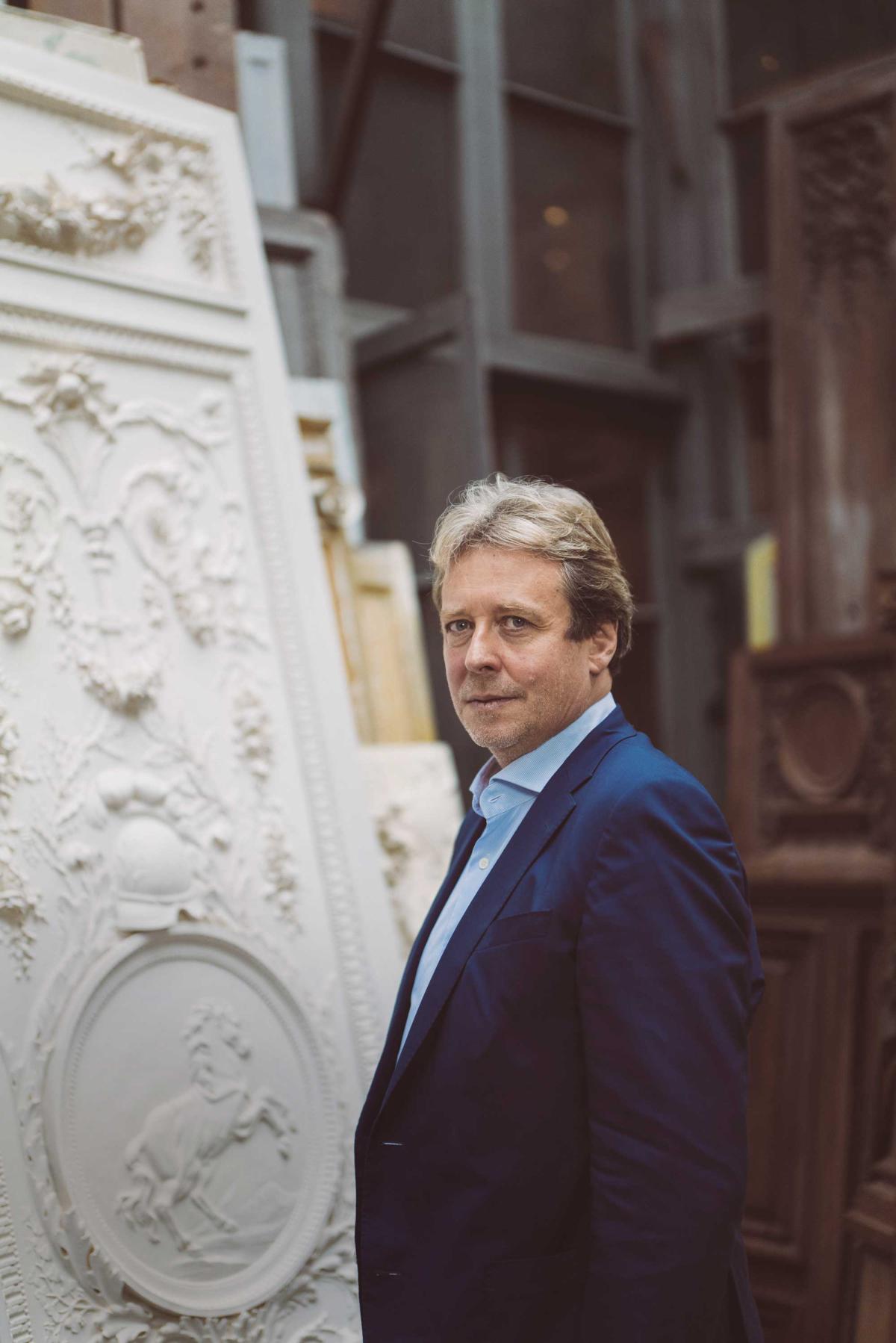

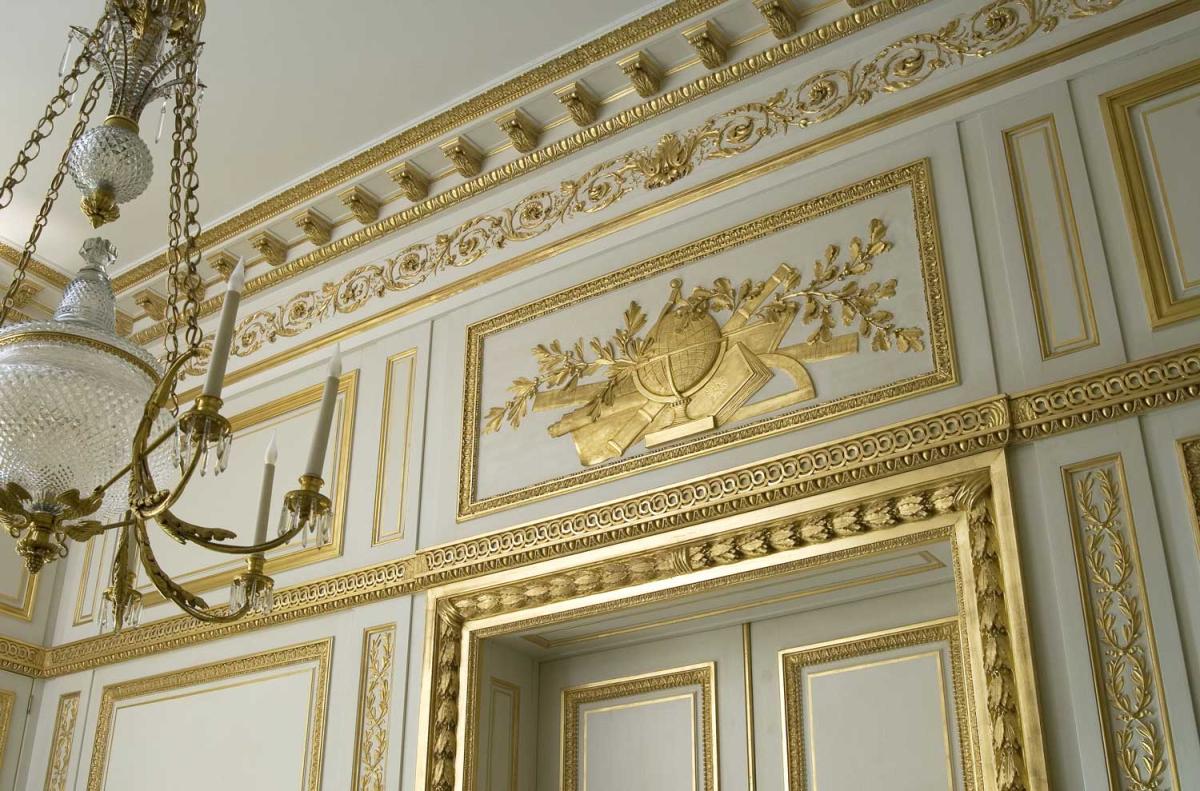
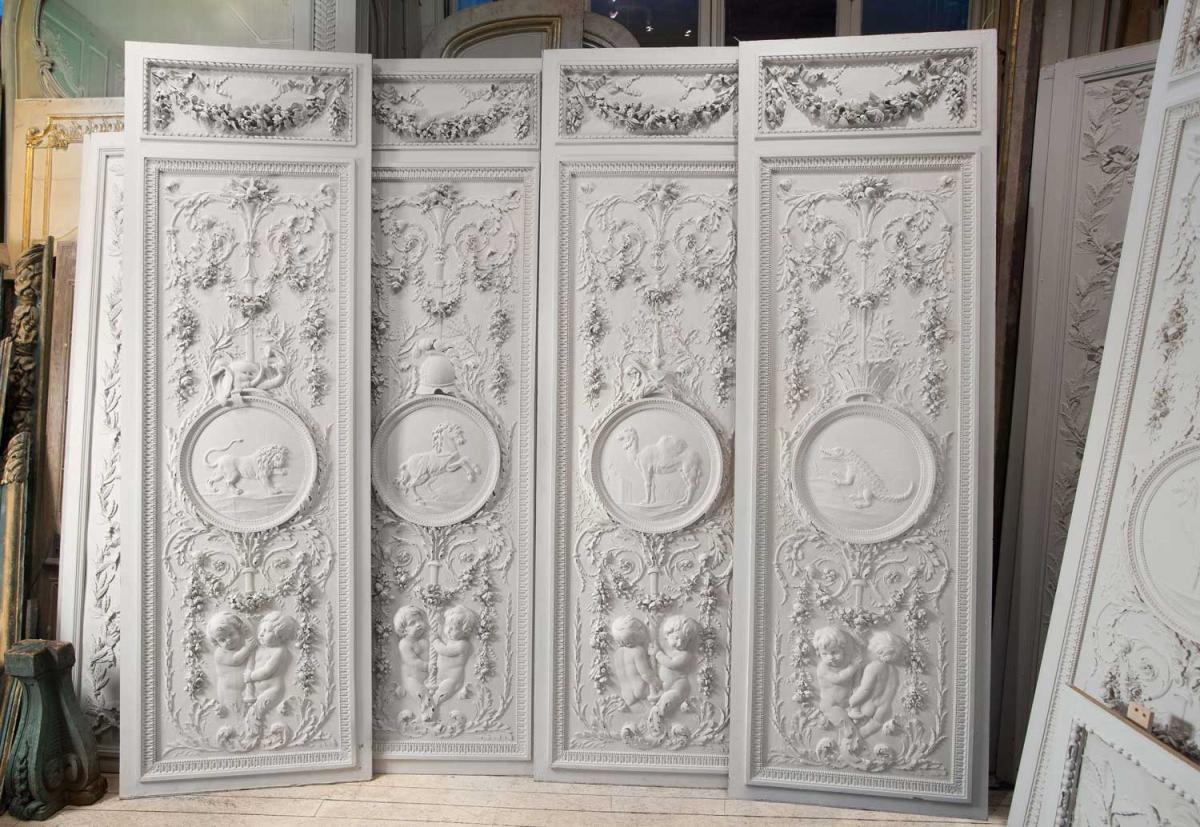
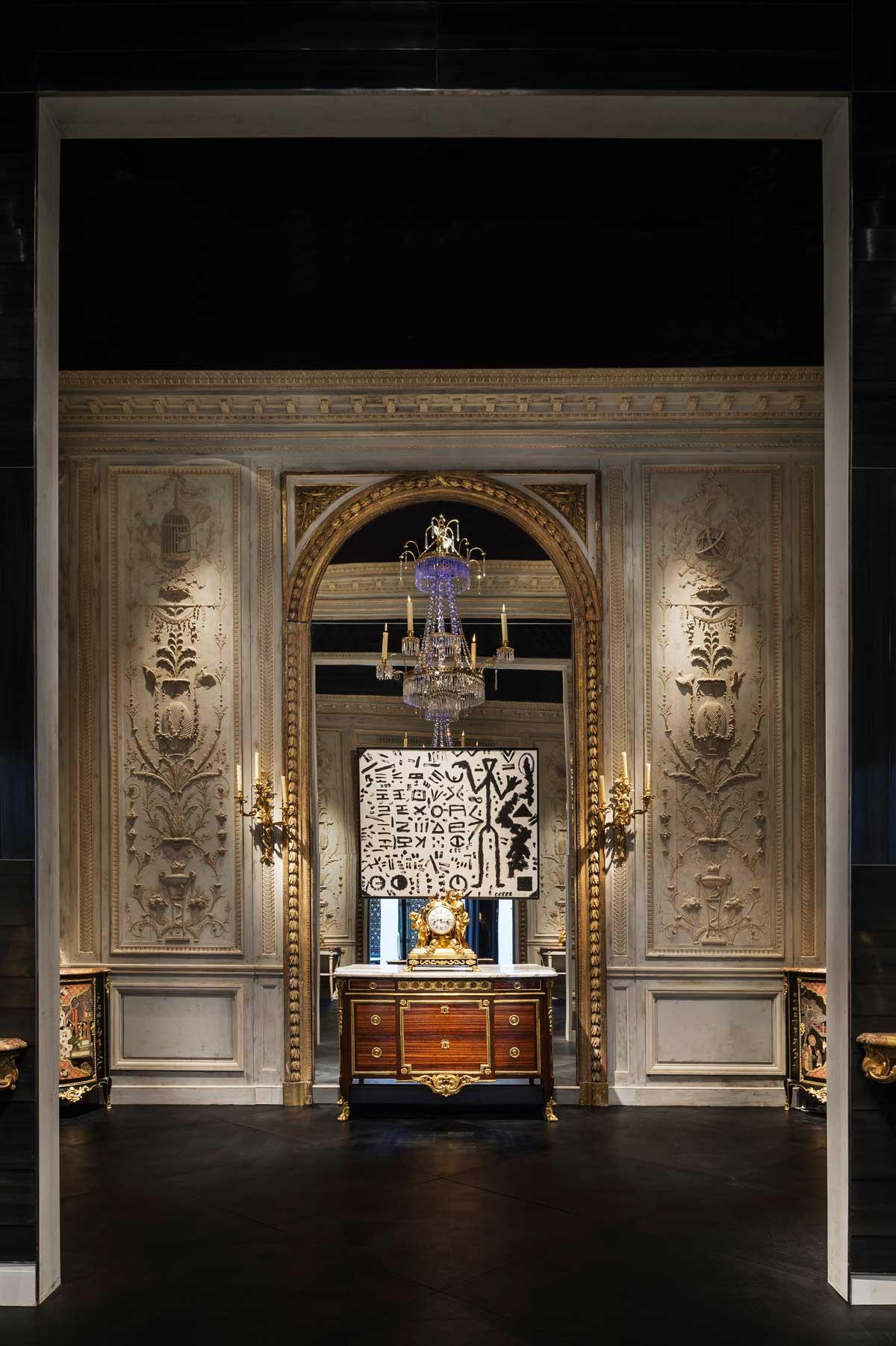
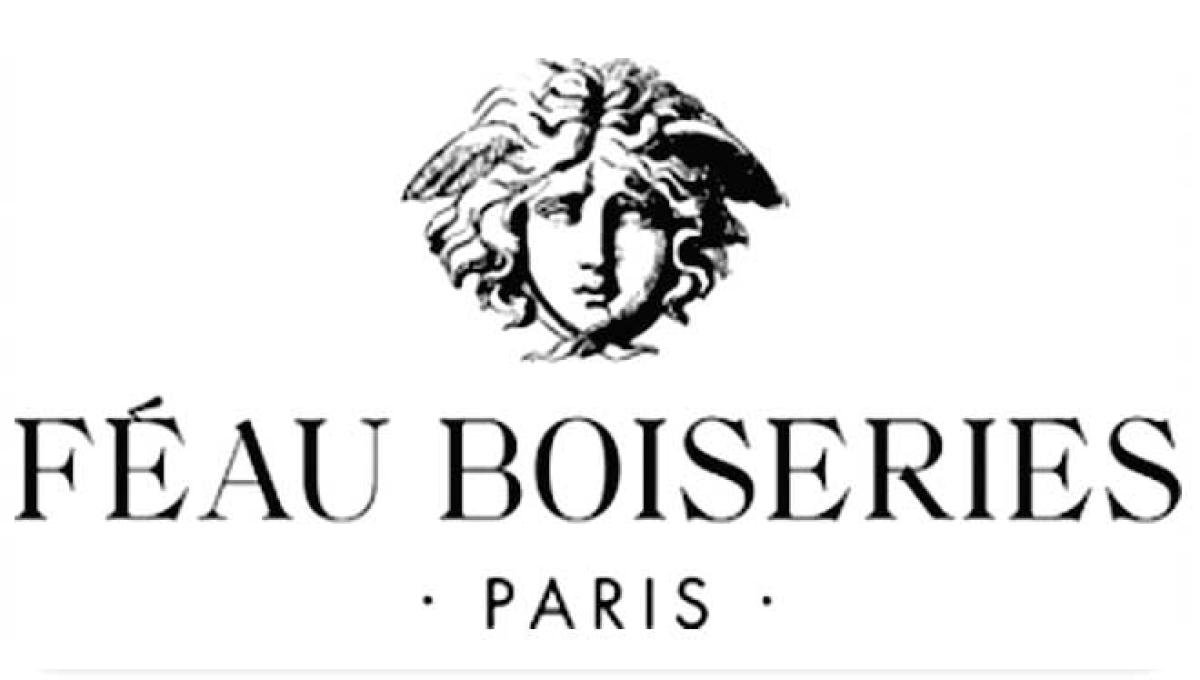
The family company Féau Boiseries collects and restores authentic wooden decors full of stories from the 17th, 18th and 19th centuries, reproduces them and adapts them for some of the most prestigious and stylish interiors.
by Kalina Konstantinova / photography by Féau Boiseries
Féau Boiseries is one of the most important references in the world of high decoration for the home. Standing at the entrance to the company's head office on rue Laugier in Paris, it is impossible to guess what a magical journey you are about to be drawn into. We are privileged to be invited here by the initiative of Invisible Collection, the online platform for furniture, design and art, and Dedar, the Italian textile company, whose joint project during Paris Design Week is presented among the impressive decor of Féau Boiseries.
The largest collection of historic wooden decorative panels in the world is gathered here. The rare and iconic patterns cover the main decorative styles from the 17th to the 20th century that characterize the French art de vivre. The priceless collection reflects the spirit of the company and is a source of inspiration for architects and interior designers from around the world.
“In each panel, a certain animal symbolizes a continent. The lion - Africa, the camel - Asia and the Silk Road, the crocodile - America, and the horse - Europe. In the Jansen company collection books that my father let me leaf through as a child, this decor most fired my imagination with all those animals presented in such exquisite fashion. I was fortunate enough to purchase the authentic panels and add them to my collection. They have become one of the symbols of Féau Boiseries. Their neoclassical fantasy often inspires our customers," says Guillaume Feot, third generation owner of the company, our host and guide on this extraordinary journey.
After the entrance hall, we find ourselves in a hall whose decor is inspired by the Etruscans – door, panels and cornices carved in solid oak, colored orange, dense and warm, and with elements of imitation bronze. The decor belonged to Napoleon, to Christian Dior, to Loris Azaro. Insatiable for beauty, the eye is attracted like a magnet to other panels – subtle and exquisite. "They were found by chance in a cupboard in a contemporary art gallery in Paris," explains Guillaume Feot. – They are part of a famous decor, many of the elements of which are kept in the Louvre.
They were located in the home of the ballerina Marie-Madeleine Guimard, a famous Parisian from the 18th century. She lived in a real palace built according to a project by Ledoux (Claude-Nicolas Ledoux) near the Opera. The skills of the most famous artists of the era were concentrated in this temple of arts. The doors were painted by Fragonard, the friezes sculpted by Clodion... In the motifs we see interwoven lilies, which means that the owner danced in Versailles before the king. Carvings often hide coded information.”
Guillaume Feot continues to show us the treasures in his collection.
"I very much admire the work of François-Joseph Bélanger, the architect of the Comte D'Artois, the future King Charles X. He designed, for example, the Bagatelle castle and the gardens. His style is extremely refined and poetic. He had great talent as a decorator and ornamentalist. These painted panels, similar to many others he used to cover the walls of his clients' beautiful homes in the Chaussée d'Antin district in the late 18th century, are the only examples of this type left on the art market. The material they are made of is very fragile and very few of them have survived. Their preparatory drawings are kept in the Louvre. In the panel, we recognize Bélanger's style, his way of poeticizing references to antiquity and combining them with modern elements in a perfect balance," says the soft-spoken collector.
The history of the company began in 1875, when Charles Fournier, an artist and goldsmith, opens a boutique in Paris on rue Laugier, not far from the Arc de Triomphe. In a short period, he became one of the most famous decorators of the Third Republic. During the Belle époque, he created extraordinary wood-carved sets for mythical, extravagant interiors such as the Rose Palace of Bonny de Castellane and Anne Gould on the rue Foch in Paris, the Ephrussi villa in Saint-Jean-Cap-Ferrat for the Rothschild family, the stately palace of the steel magnate Henry Clay Frick on Fifth Avenue in New York. Luckily for us, we can still see this interior because the building has been converted into a museum (The Frick Collection).
The decorator Raymond Grelou, a passionate lover of carved decorations, bought the company from Fournier in 1917 and enriched the portfolio with modern Art Deco motifs. In 1963, Grelu sold his business to Guy and Joel Feo. At that time, Guy Feot was an assistant to leading designer Jean Pascoe, one of the decorators of the famous ocean liner Normandie. Despite his obvious artistic bent, Gee has to deal with far more mundane tasks in order for the company to prosper. However, he vowed to allow his son Joel, also a fan of decorative arts and crafts, to live out his dream and develop his talent. When he took over the management of the company, Joel Feot had already started working at the prestigious Parisian decoration company Jansen, in the team of Stéphane Budden, who is engaged in the renovation of the White House in Washington on behalf of the Kennedy family. Under the leadership of Joel Feot, the company continues to create luxurious wood paneling and paneling for the most beautiful interiors from Paris to New York.
Today, Guillaume Feot and his sister Angélique Feot-Leborn are the third generation at the helm of the family company. Under their leadership, Féau Boiseries expanded its activities. All the time - from the initial idea to the maintenance, from the drawing and the sets themselves to their installation on site, she cooperates with the designers and architects. In her workshops, highly qualified craftsmen follow traditional techniques, including those from the 17th century.
An ambassador of French taste and an expert in his field as well as an enthusiastic collector, Guillaume Feot is always happy to share his ideas and advice. He knows how to direct clients to specific historic decor that will most accurately fit their original design ideas. One of the architects who highly value his collaboration with Guillaume Feot is the American MICHAEL S. SMITH, who renovated the private apartments in the White House on behalf of Michelle and Barack Obama.
"The wood-carved decors (les boiseries) have a special attraction. They magically bring order to architecture. Without even understanding how exactly, they shape every space perfectly. For this reason, I cannot even imagine a project without paneling, and it is a challenge for me to be able to create harmony between their classical references and contemporary interiors," says the architect.